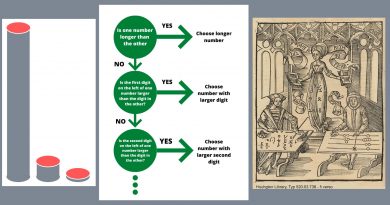NEW PAPER on the advantages of simple formats like proportions and natural frequencies for risk assessment
Risk literacy requires basic elements of numeracy. It requires some ease with basics of probability theory. Yet, it is these basics which often cause difficulties, in particular when they are presented using abstract formalisms. This paper reviews a systematic framework for representations of information that eliminate difficulties and frequent fallacies in dealing with probabilities. A large subfamily of these representations is inspired by Otto Neurath’s isotypes and consists of so-called icon arrays. Another subfamily contains trees, which are hierarchical noncyclic graphs. Yet another subfamily consists of double trees that foster intuitions for Bayesian inferences. An interactive webpage is presented that can be used by both adults and children, with buttons and sliders to set parameters and with 3 different levels of statistical literacy. Furthermore, trees are examined as structures for combining multiple cues in order to classify situations under risk and make decisions. Plugins for constructing such trees and for reckoning with risks are presented and discussed.
By U. Hoffrage, L. Martignon, T. Erickson and J. Engel, published on March 15, 2024 in Proceedings of the HAR Conference in Paris, September 19-22, 2023. Edited by J. Baratgin, B. Jacquet and R. Brochier.
Read the PDF: LINK


